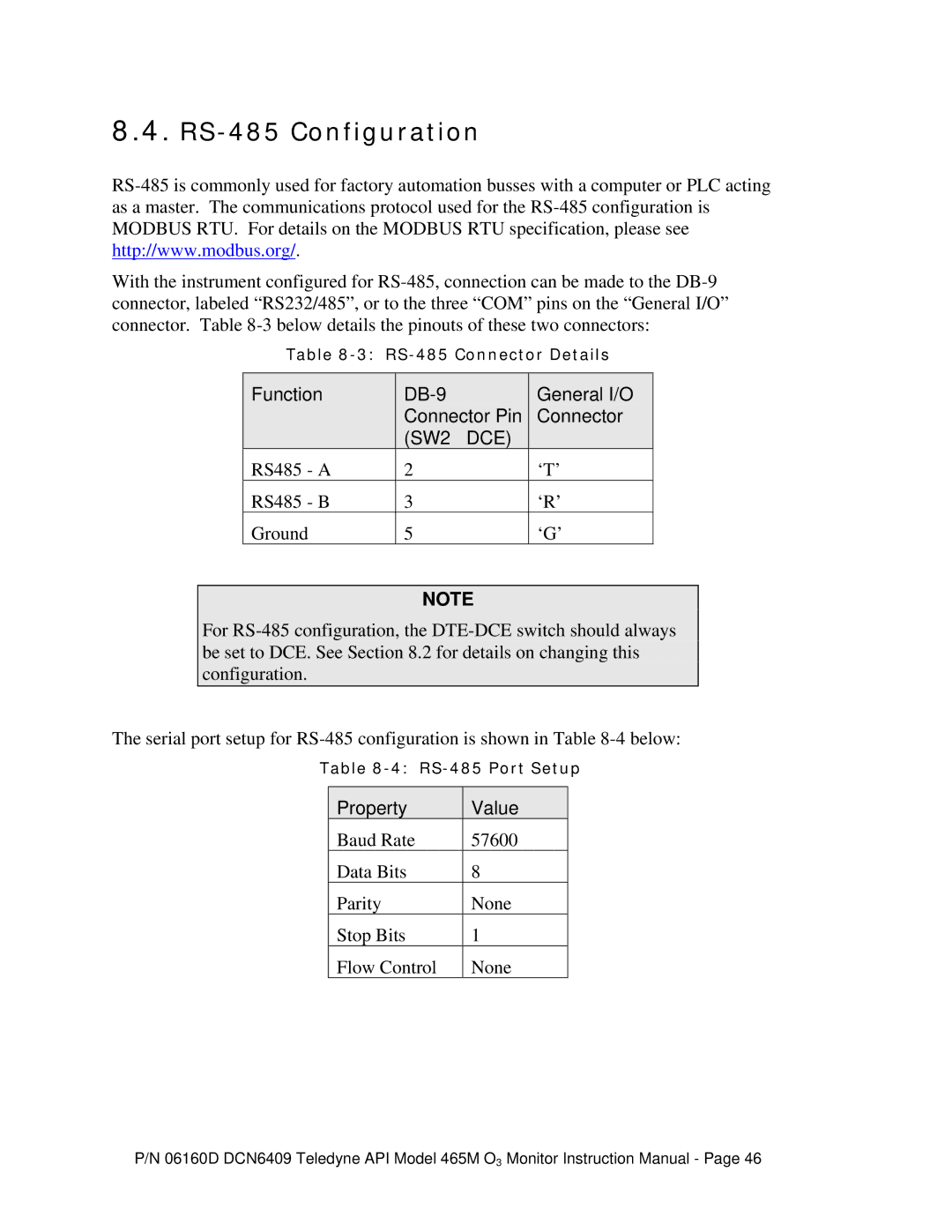8.4.RS-485 Configuration
RS-485 is commonly used for factory automation busses with a computer or PLC acting as a master. The communications protocol used for the RS-485 configuration is MODBUS RTU. For details on the MODBUS RTU specification, please see http://www.modbus.org/.
With the instrument configured for RS-485, connection can be made to the DB-9 connector, labeled “RS232/485”, or to the three “COM” pins on the “General I/O” connector. Table 8-3below details the pinouts of these two connectors:
Table 8-3: RS-485 Connector Details
Function | DB-9 | General I/O |
| Connector Pin | Connector |
| (SW2 – DCE) | |
RS485 - A | 2 | ‘T’ |
RS485 - B | 3 | ‘R’ |
Ground | 5 | ‘G’ |
NOTE
For RS-485 configuration, the DTE-DCE switch should always be set to DCE. See Section 8.2 for details on changing this configuration.
The serial port setup for RS-485 configuration is shown in Table 8-4below:
Table 8-4: RS-485 Port Setup
Property | Value |
Baud Rate | 57600 |
Data Bits | 8 |
Parity | None |
Stop Bits | 1 |
Flow Control | None |
P/N 06160D DCN6409 Teledyne API Model 465M O3 Monitor Instruction Manual - Page 46

